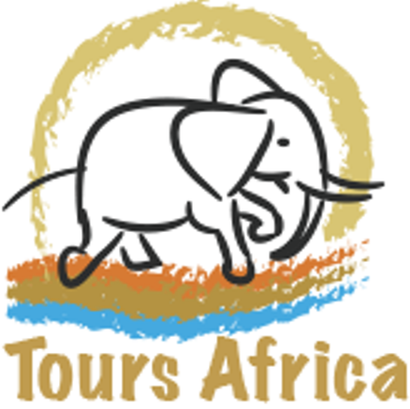
All The Travel Information You Need To Know About Lesotho
Highlights of Lesotho, as well as all the information every traveler should know
The Kingdom of Lesotho is a landlocked country in Southern Africa completely surrounded by South Africa. It is just over 30,000 km2 and has a population slightly over two million people.
The name 'Lesotho' translates roughly into "the land of the people who speak Sesotho". The original inhabitants of the area were the San people. Examples of their rock art can be found in the mountains throughout the area.
The Lesotho Government is a parliamentary or constitutional monarchy. Lesotho is divided into ten districts, each headed by a district administrator. Each district has a capital known as a camptown.
Lesotho's ethno-linguistic structure consists almost entirely of the Basotho. The main language, Sesotho (or Sotho), is the first official and administrative language, and it is what Basotho speak on an ordinary basis.
The country holds rich culture where villagers on horseback in multi-coloured clothing wave as you drive passed. The hiking is world class and can even be done on a Basotho pony! Lesotho is a fantastic place for an adventure tour.
Lesotho's Wildlife
Lesotho is famous for its beautiful mountain passes, traditional communities and wildlife. Due to its beautiful wildlife, Lesotho is a great country for visitors who are looking for outdoor adventures and to immerse themselves in nature.
The Sehlabathebe National Park is Lesotho’s most popular game and national park which allow guests to witness Lesotho’s wildlife up close
The mountainous regions of Lesotho are a perfect environment for snakes. Most of Lesotho's snakes are small and potentially venomous which travelers are made aware about before their ventures.
Other interesting animals that are found in Lesotho include servals, leopards, zebras, wildebeest and ponies. Lions and ostriches once roamed the land freely but hunting and deforestation largely decreased and eliminated their numbers.
Lesotho’s rivers provide an abundance of fish and frogs.
Lesotho's Culture
Basotho speak Sesotho and majority speak excellent English which is a second language widely used. The people are well know for their exquisite and unique artwork. The traditional Basotho Hat called mokorotlo is a fine range of grass-works made in Lesotho.+
Their traditional culture holds strong value to village life where elders are highly respected and most traditions and festivities are centred around seasons of the year. The Matabele people have preserved their traditions extremely well and their traditional dance, Ndlamo, is still a great way to celebrate throughout much of Lesotho.
In the towns, as well as in the mountains, it is common to come across a Basotho horseman in his traditional cloak or blanket, who will raise his hand and greet you with, "Khotso" which means 'peace'.
Throughout Lesotho you will see people dressed in woolen blankets with beautiful patterns which they wear to protect themselves from the cold temperatures. Animals are very important to the people. The Basotho pony represents the best form of transport in the mountains and donkeys are often used as pack animals.
Their villages are very structured, made up of a number of kraals (a collection of buildings belonging to one family) and a chief. Some huts are for sleeping, some for storage and one for cooking. Each kraal will also have an enclosure for livestock.
Lesotho's Currency
The loti (plural: maloti) is the currency of the Lesotho. It is subdivided into 100 lisente (singular: sente). The loti is on par with the South African rand and accepted widely as a form of currency in Lesotho.
Lesotho’s economy is mainly based on manufacturing, livestock, agriculture, and the wages of people who work in South Africa.
The loti offers favourable rates of exchange for foreigners therefore your travel budget will go surprisingly far. Visa and MasterCards are usually accepted in major establishments of Lesotho. Restaurants outside of Maseru (and most in Maseru) will probably not accept credit card as a means of payment.There are ATMs at banks in most towns and is advisable to draw cash to avoid your card not being accepted in certain places.
Getting To Lesotho
Moshoeshoe I International Airport is located in the town of Mazenod, about 18 km (11 mi) southeast of Maseru, the capital of Lesotho. You will get to this airport via a stop-off at OR Tambo Airport in Johannesburg, South Africa. This flight takes approximately 1 hour 15 minutes.
If you decide to self-drive to Lesotho, you will come from South Africa. It's recommended that you hire a car in South Africa as it will be cheaper than hiring in Lesotho.
The major border posts are Caledonspoort, Ficksburg Bridge, Makhaleng Bridge, Maseru Bridge, Ngoangoma Gate, Peka Bridge, Qacha's Nek, Ramatseliso's Gate, Sani Pass, Sephaphos Gate, Tele Bridge and Van Rooyen's Gate.
Passport, Visa and Other Entry Requirements To Lesotho
To enter Lesotho, you will need a passport valid for 3 months, with at least 2 blank pages. You will also have to have a return ticket.
If you are from certain foreign countries, Lesotho does not require you to have a visa. Please contact your nearest Lesotho embassy to find out whether you will need to have a visa or not.
Passport and visa requirements are liable to change at short notice. Travelers are advised to check their entry requirements with their embassy.
The Best Time To Visit Lesotho
With plenty of sunlight and pleasant weather, the summer months of October to April are a great time to visit Lesotho if you'd like to avoid the rains and experience the many outdoor activities.
Some visitors like to visit Lesotho during winter, as this is the time of the year where the mountains are covered with beautiful flowers and the valleys scattered with various blossoms. Rain and snow make the cold season a magical experience and skiing is at its best.
Malaria Risk and Vaccinations
There is no risk of yellow fever in Lesotho. The government of Lesotho requires proof of yellow fever vaccination only if you are arriving from a country with risk of yellow fever.
Malaria is not a risk in Lesotho, unless you have otherwise contracted it in another country of Africa.
Lesotho's Climate
Lesotho has a continental climate, with summer being the rainiest season in Lesotho and winter being the driest.
In the lower altitudes of Lesotho, the weather tends to be warmer and more temperate but as you go into higher altitudes, the conditions get colder.
Summer time in Lesotho (generally October to April) can get warm temperatures with cooler nights. Winter (May to September) experiences milder temperatures with cold nights, frost and snow, especially the higher you go.
Driving In Lesotho
You have to be at least 18 to be able to drive in Lesotho. If you're renting a car the minimum age is 21. In Lesotho you’ll drive on the left side of the road.
Roads are generally in good condition but it is advised to have a 4x4 car during the rainy seasons, as the dirt roads can quickly turn in to mud roads. The main roads in Lesotho are similar to minor roads in Europe — they are tarred, and surprisingly free of potholes.
Please do not leave any valuables in an unattended vehicle, as you may be subject to a break in. Try to park in an attended parking lot, especially at night.
Finding petrol stations can be a problem. It is best to fill the tank in Maseru or in South Africa.
Lesotho's Electric Plug Points/Outlets
In Lesotho the power sockets are of type M. The standard voltage is 220 V and the standard frequency is 50 Hz.
Foreign appliances may need a power plug adapter but will depend on the power plugs used in your own country. You can use your electric appliances in Lesotho if the standard voltage of your country's appliances are in between 220 - 240 V (as is in the UK, Europe, Australia and most of Asia and Africa).
If the voltage of your appliance is not in this range, you will need a voltage converter. To be sure, check the label on the appliance. Some appliances don't need a converter. If the label states 'INPUT: 100-240V, 50/60 Hz' the appliance can be used in all countries in the world.
Tipping In Lesotho
Tipping in Lesotho is common and follows closely to the customs of tipping in South Africa. Gratuities are not included in bills and is common courtesy to add a tip, depending on the level of service your received.
At a restaurant, you will usually add a 10% tip for your waiter/waitress. Tipping hotel staff in Lesotho is common - tip your bell boy about 5-10 M per bag and your maid the same per night.
Dress Code In Lesotho
Lesotho is not exactly the fashion capital of the world (in a westerner's eyes), however you will see the locals wearing beautiful blankets wrapped around their shoulders or bodies, by both men and women.
It is recommended to bring along your casual clothing - please check the weather patterns beforehand of the season in which you're visiting Lesotho. For women, it's advisable to wear jeans, shorts, dresses and skirts, perhaps with a little bit more modesty than usual (if you like to wear short items). For men, casual trousers and shorts are acceptable in Lesotho.
Many people wear warm hats when it is chilly and sun hats when it’s warmer. Take along thick jackets and good quality hiking boots for the cold conditions, especially if you plan on exploring the mountains.
HIV/Aids In Lesotho
Lesotho is one of the countries hardest hit by HIV, with most of the affected population being women.
Holiday flings are alluring and hardly uncommon. Please make sure to protect your safety by using condoms in all instances. You alone are responsible for your health and safety.
Dining In Lesotho
Basotho cuisine features Lesotho, British and South African styles. For generations, Basotho depended on their livestock and own agriculture as sources of food, resulting in today's traditional food being simple and not as spicy as the rest of Africa.
Due to their foreign influences, you will find people eating Oxtail Stew, seafood dishes, braai's (BBQ) etc. They also enjoy rice dishes, bread, potatoes, beans, vegetables and fruit.
Attractions In Lesotho
- Maletsunyane Falls (Semonkong)
- AfriSki Ski and Mountain Resort (Butha-Buthe)
- Katse Dam (Maseru)
- Maluti Mountains (Maseru)
- Gates of Paradise Pass (Malealea)
- Mohale Dam (Maseru)
- Liphofung Caves (Leribe)
- Bokong Nature Reserve (Leribe)
- Sani Pass (Mokhotlong)
Schreiben Sie einen Kommentar
Kommentare werden vor der Veröffentlichung genehmigt.






Saskia Carelse
Autor